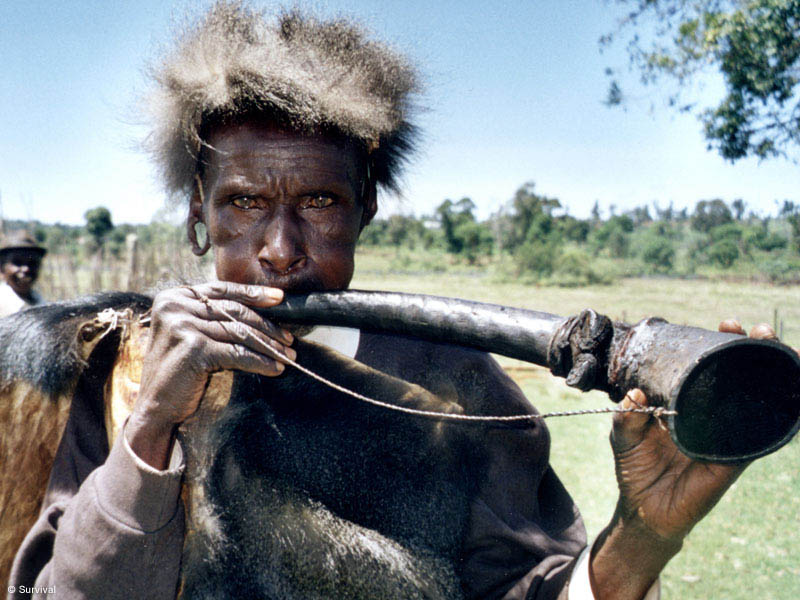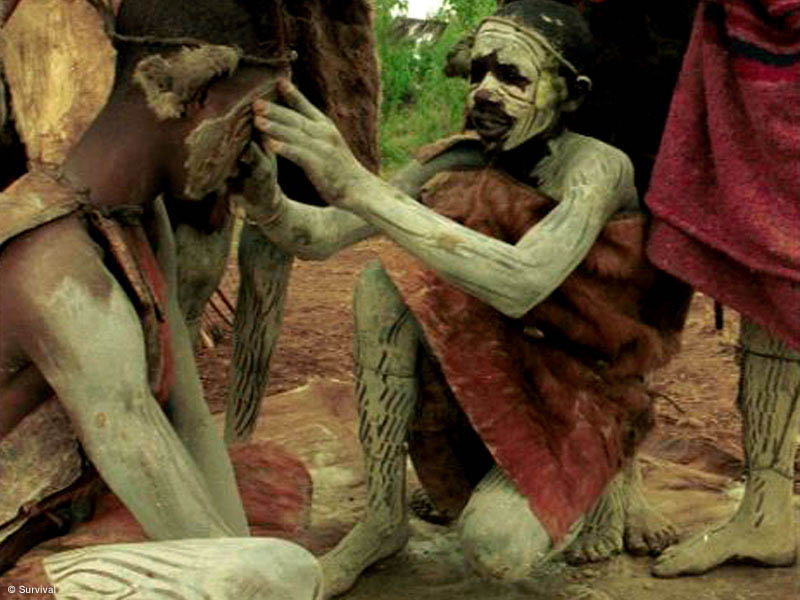Despite being largely ignored by the majority of Kenyan society, the Ogiek people of western  Like many indigenous cultures throughout the world, their way of life has come into conflict with the policies of the government of the country in which has been formed around them. The Kenyan government has recently proposed a plan to remove all people from the
Like many indigenous cultures throughout the world, their way of life has come into conflict with the policies of the government of the country in which has been formed around them. The Kenyan government has recently proposed a plan to remove all people from the
The Ogiek are a small people group, estimated to number around 20,000. They are traditionally a hunter-gatherer society, one of the few remaining such groups in
As honey gatherers, who survive mainly on wild fruits and roots, wild game hunting and traditional bee keeping, they can therefore be considered as friendly to the environment on which they depend. Due to their small size and traditional lifestyle the Ogiek have long been a marginalized group in Kenyan society. They have never had a member of their tribe serve in national or provincial government, and the tribe itself is not even recognized among
Information getting to the public about the Ogiek has been pretty much one-sided. The focus has been the forest and the effects of having human occupancy in the forest. This has in turn been translated by the general population to mean that the Ogiek contribute to the degradation of the forest. What has been left out of these reports is that the Ogiek people have maintained a way of life that is deeply dependent on the survival of the
Their way of life is based on the simple ideology of not taking more than is needed from the forest, and always giving back to it. Much of the degradation of the
The counter effect of civilization is the exclusion of communities not strong enough to keep up with it. The further they are from development, which unfortunately is measured by technology advancement, the easier it is for a group of people to be forgotten, which has been the case for the Ogiek. Consequently, they have been misrepresented, if at all, in the public eye, as to what their role is in the forest and as to whom they are as a community. As it stands majority believe that the Ogiek are the sole cause for the forests decline and degradation, and the ultimate solution would be to kick them out of the forest. They are also viewed as a very hostile and bloodthirsty community. There is a need to show the other side of the story, if only to balance the equation; need to tell the story from the other side. They need to be given a chance to tell about the many numbers of their kin being killed in efforts to remove them from the forest, the living with fear of eviction from the only place they have called home for centuries and the eventual decline the community faces. This is exactly what this project seeks to do. By providing this indigenous community that is on the verge of decline with a medium in which they can voice out their concerns, views and plight, this project will be the fist of its kind. During the colonial period, there were efforts to assimilate the tribe as away of doing away with them, which led to a great reduction in their numbers.
There does not seem to be any efforts being applied into making sure that this community thrives and does not get absorbed into the mainstream. As the pressure mounts for them to move from the forest, the younger generation is moving to the city, getting educated, intermarrying and settling in the urban centers. The community is fast on the decline and if the trend continues, the Ogiek are going to be history in the next 20 or so years. The urgency to tell their story is so great it cannot be overemphasized. If they are to successfully be kicked out of the forest, its only matter of time before they get assimilated in to the global cities which spells out an end for them as a people, and of their rich culture.
This is purely why I am embarking on this project. Keep reading to follow its development.


0 comments:
Post a Comment
Share your thoughts...